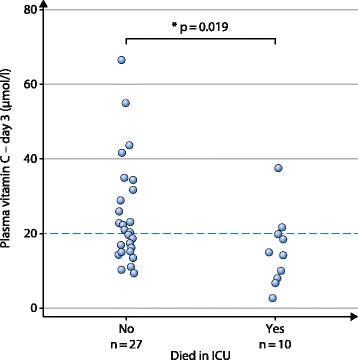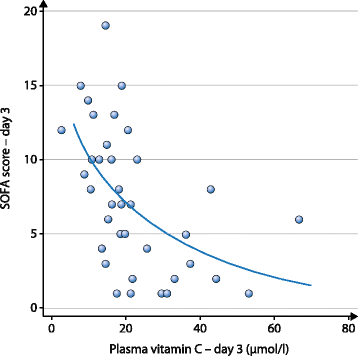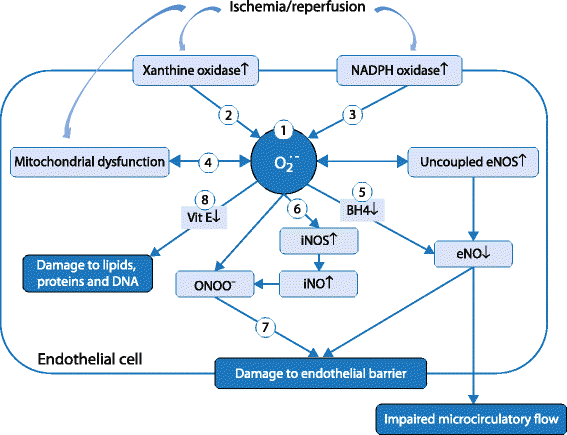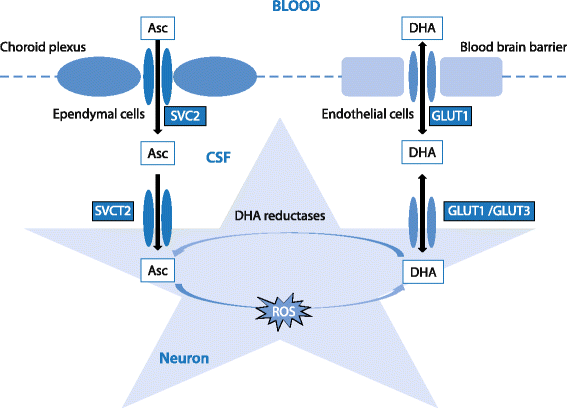Making sense of early high-dose intravenous vitamin C in ischemia/reperfusion injury
- PMID: 29558975
- PMCID: PMC5861638
- DOI: 10.1186/s13054-018-1996-y
Making sense of early high-dose intravenous vitamin C in ischemia/reperfusion injury
Abstract
This article is one of ten reviews selected from the Annual Update in Intensive Care and Emergency Medicine 2018. Other selected articles can be found online at https://www.biomedcentral.com/collections/annualupdate2018 . Further information about the Annual Update in Intensive Care and Emergency Medicine is available from http://www.springer.com/series/8901 .
Conflict of interest statement
Ethics approval and consent to participate
Not applicable.
Consent for publication
Not applicable.
Competing interests
Research grant from ZonMW, the Netherlands Health Organization for Health Research and Development, to perform a randomized controlled trial on high dose vitamin C after cardiac arrest. No financial conflicts of interest.
Disclaimer
The caption for Fig 3 should read as follows: Pleiotropic effects of vitamin C. 1. Vitamin C scavenges free radicals from superoxide (O2∙-). 2. Vitamin C inhibits activation of xanthine oxidase and of 3, NADPH oxidase. 4. Vitamin C protects the mitochondria from oxidative stress caused by increased leakage of electrons from the dysfunctional electron transport chain. 5. Vitamin C recovers tetrahydrobiopterin (BH4) from dihydrobiopterin (BH2), restoring endothelial nitric oxide synthase (eNOS) activity and increasing eNO bioavailability. 6. Vitamin C inhibits inducible NOS (iNOS) activation, preventing profuse iNO production and peroxynitrite (ONOO−) generation. 7. Vitamin C scavenges ONOO−, preventing loosening of the tight junctions of the endothelium. 8. Vitamin C recovers α‐tocopherol, which protects against lipid peroxidation.
Publisher’s Note
Springer Nature remains neutral with regard to jurisdictional claims in published maps and institutional affiliations.
Figures




Comment in
-
Adjuvant vitamin C in cardiac arrest patients undergoing renal replacement therapy: an appeal for a higher high-dose.Crit Care. 2018 Aug 16;22(1):207. doi: 10.1186/s13054-018-2115-9. Crit Care. 2018. PMID: 30115090 Free PMC article. No abstract available.
Similar articles
-
Effects of Fluids on the Macro- and Microcirculations.Crit Care. 2018 Mar 20;22(1):74. doi: 10.1186/s13054-018-1993-1. Crit Care. 2018. PMID: 29558989 Free PMC article. Review.
-
Continuous Electroencephalography Monitoring in Adults in the Intensive Care Unit.Crit Care. 2018 Mar 20;22(1):75. doi: 10.1186/s13054-018-1997-x. Crit Care. 2018. PMID: 29558981 Free PMC article. Review.
-
The emerging role of the microbiota in the ICU.Crit Care. 2018 Mar 20;22(1):78. doi: 10.1186/s13054-018-1999-8. Crit Care. 2018. PMID: 29559006 Free PMC article. Review.
-
Angiotensin in Critical Care.Crit Care. 2018 Mar 20;22(1):69. doi: 10.1186/s13054-018-1995-z. Crit Care. 2018. PMID: 29558991 Free PMC article. Review.
-
Respiratory Management in Patients with Severe Brain Injury.Crit Care. 2018 Mar 20;22(1):76. doi: 10.1186/s13054-018-1994-0. Crit Care. 2018. PMID: 29558976 Free PMC article. Review.
Cited by
-
Addition of Vitamin C Does Not Decrease Neuron-Specific Enolase Levels in Adult Survivors of Cardiac Arrest-Results of a Randomized Trial.Medicina (Kaunas). 2024 Jan 5;60(1):103. doi: 10.3390/medicina60010103. Medicina (Kaunas). 2024. PMID: 38256364 Free PMC article. Clinical Trial.
-
Therapeutic strategies for ischemia reperfusion injury in emergency medicine.Acute Med Surg. 2020 Apr 13;7(1):e501. doi: 10.1002/ams2.501. eCollection 2020 Jan-Dec. Acute Med Surg. 2020. PMID: 32431842 Free PMC article. Review.
-
Joint Cardioprotective Effect of Vitamin C and Other Antioxidants against Reperfusion Injury in Patients with Acute Myocardial Infarction Undergoing Percutaneous Coronary Intervention.Molecules. 2021 Sep 21;26(18):5702. doi: 10.3390/molecules26185702. Molecules. 2021. PMID: 34577176 Free PMC article. Review.
-
Effect of high-dose intravenous vitamin C therapy on the prognosis in patients with moderately severe and severe acute pancreatitis: protocol of a prospective, randomized, double-blinded, placebo-controlled study.Front Med (Lausanne). 2023 Nov 9;10:1278167. doi: 10.3389/fmed.2023.1278167. eCollection 2023. Front Med (Lausanne). 2023. PMID: 38020102 Free PMC article.
-
High-dose vitamin C on sepsis: Protocol of a prospective, multi-centered, double-blinded, randomized, and placebo-controlled superiority study.Front Med (Lausanne). 2022 Sep 15;9:950246. doi: 10.3389/fmed.2022.950246. eCollection 2022. Front Med (Lausanne). 2022. PMID: 36186784 Free PMC article.
References
-
- Beesems JA, Stieglis R, Koster RW. Reanimatie buiten het ziekenhuis in Noord-Holland en twente: resultaten ARREST-onderzoek. In: Koopman C, van Dis I, Visseren FLJ, Vaartjes I, Bots ML, editors. Hart- en vaatziekten in Nederland 2012, cijfers over risicofactoren, ziekte en sterfte. Den Haag: Hartstichting; 2012. pp. 2006–2011.
Publication types
MeSH terms
Substances
LinkOut - more resources
Full Text Sources
Other Literature Sources
Medical

